‘Modern Brides & Modern Grooms’: How Same-Sex Marriage Has Opened Doors for All of Us
The new paradigm explodes restrictive categories and in their place offers greater freedom for both gay and straight couples.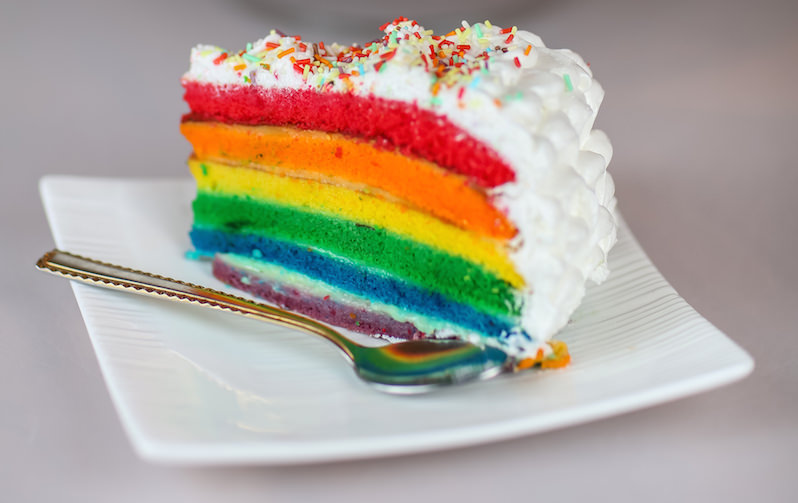 Shutterstock
Shutterstock
Editor’s note: The introductory essay below provides a lead-in for the book excerpt (beginning on Page 2) from Mark O’Connell’s “Modern Brides & Modern Grooms: A Guide to Planning Straight, Gay, and Other Nontraditional Twenty-First-Century Weddings” (Skyhorse, 2014) that follows.
Marriage equality is already a reality across most of the United States, and I’m not just talking about the law. Now that 36 states have legalized same-sex marriage — and one regressive appellate opinion has upheld bans against it in Ohio, Kentucky, Michigan and Tennessee — the U.S. Supreme Court has finally agreed to decide once and for all whether or not the U.S. Constitution guarantees every American the right to marry whomever he or she loves. But no matter what SCOTUS comes up with this June, the social practice of marriage has already evolved before our eyes in irreversible ways — for all couples, gay and straight alike.
I wrote “Modern Brides & Modern Grooms: A Guide to Planning Straight, Gay, and Other Nontraditional Twenty-First-Century Weddings” with this cultural landscape in mind. I wanted a book to exist about the new paradigm of marriage, a book that acknowledges we have hit the reset button on marriage and that explores how we are all more alike than different in the ways we form bonds.
As a culture, we are all demanding from our marriages more freedom, creativity, room to try again, fail again and fail better (to parrot Samuel Beckett) than ever before. I wanted this book to provide context for our modern marital practices and to serve as a resource guide, a relationship navigator and a collection of brazenly truthful first-person accounts (from my own life and the lives of many other people, of both sexes and of all shapes, colors, sizes and orientations). It’s a book for absolutely all who want recognition for who they are and whom they love, and who want to stay connected to their relatives and friends at the same time.
Last year, shortly after SCOTUS struck down the key parts of the Defense of Marriage Act, I was offered the chance to write a “same-sex wedding guide.” Grateful as I was for the opportunity, and despite my awareness that niche marketing is generally a clever way to do business, I had to say no. For me to write such a book would feel like a lie. It would suggest that the progress of the marriage equality movement, both legally and socially, could be summed up tidily with two distinct categories of marriage — “the gay” and “the straight” — and that each category would have its own set of rigid, normative expectations. That just isn’t true.
On the contrary, the transformative outcome of the marriage equality movement — of same-sex couples fighting to be recognized — is that marital practices are now getting freshened up for everyone, with a queer perspective. This paradigm explodes categories that restrict us and in their place offers a great deal of freedom, recognition and equality to every committed couple (gay or straight). (I’ve written articles on this topic for Psychology Today and The Huffington Post.)
For one thing, couples of all stripes now choose to be married, with eyes wide open, rather than sleep-walking through the steps dictated by tradition. Every modern couple’s choice to wed has the same awakened passion and verve as those of the same-sex couples who fought for decades to have their love recognized in the face of major adversity.
Marriage equality has also demolished gender-role stereotypes in all of our relationships, allowing equality and harmony between partners as they collaborate on where to live, negotiate career ambitions and do family planning (however “family” is defined). And then there’s sex: We are able to be more open, transparent and accepting of our sexual needs than we have ever been, and married couples are now provided more space to communicate and negotiate sexual practices and to seek advice and support to facilitate these processes when necessary.
The idea of transparency is perhaps the greatest bit of wisdom we all have gleaned from the experiences of same-sex couples. We all have learned to come out of the closet, if you will, about who we are and how we love, to close the door on shame and to ask for help when we need it. When we remove the pressure to be perfect or to meet society’s expectations for what our marriages and families should look and act like, we make room for the possibility of making them work better.An Excerpt from “Modern Brides & Modern Grooms: A Guide to Planning Straight, Gay, and Other Nontraditional Twenty-First-Century Weddings”
Why Wedding? Why Now?
As my friend Nando puts it, weddings are “just about status.” He says, “She just wanna get the five-story, twin-tower-cake, and show all her friends what she got.” And you know, he’s got a point. Few can afford a big wedding these days. A 2013 study calls modern marriage a “middle-class luxury,” saying a lack of steady employment makes most people too concerned with their own survival “to provide materially and emotionally for others.” This understandably makes many wonder if the ones getting hitched are just grandstanding.
But getting married for status is not only done by gratuitous, blingy show-offs. Those in poverty have also caught on to nuptial privileges, even if it is a struggle to fulfill many of the responsibilities that come with it. While working in a community mental health clinic in Manhattan, for example, I had a homeless client who married her girlfriend so they would be “upgraded” to a family shelter. This provided them more safety, privacy, and space than before. So yes, there are a variety of reasons people of all stripes seek the social privilege of marriage.
Although, I suspect that many, if not most, wedding-bound couples are after something more than status, despite appearances — something invisible and hard to define; something more than “Here’s what I’ve got. Take that!”
I have a hunch we have drives that transcend the reductiveness of “happy endings,” even though riding into the sunset–The End–has been the most popular way to discuss weddings throughout the centuries. I suspect there is a more ineffable and commonly shared drive to marry within many of us. I think we viscerally experience this drive every time we break off from families, and start to form new ones.
For example, critical of the Marital Status Game as he may be, Nando says he does want to get hitched to his boyfriend “for the legal protection,” he said at first; in light of their status as a bi-national couple. But as we talked further he revealed he wants something more than “sitting around a desk signing papers on a random afternoon.” He wants a proposal. Not “a rock that anchors your hand to the floor… I wouldn’t be with a school teacher if that’s what I wanted.” But there’s an inexplicable fantasy he wants to enact, perhaps a security that transcends residency or finances and is deeper than a vapid declaration of “Look! We’re soul-mate, twin-flames, forever!” An inexplicable something he searches for words to describe. The specific words Nando eventually does find will be the lynchpin of his wedding–and perhaps reveal he is more alike than different from the married folk of whom he’s sometimes critical.
Many couples I spoke to, especially straight ones, simply thought having a wedding was a way to move forward. To become adults. To segue into a new phase of life together. To be witnessed, validated, and celebrated as a couple. And to garner support as an established nuclear family prepared to raise a child.
Angus and Summer
As it turns out, getting married to raise a kid in a “secure home”–i.e., with two legally bound parents–is seemingly the most popular, America’s Sweetheart answer to the question of why. Even if romantic love doesn’t share top billing at the event.
For instance, when my older brother, Angus, and sister-in-law, Summer, were married after almost a decade together–and after entering their reception serenaded by the Mission Impossible theme–their officiant explained their choice to marry by saying, “Angus wanted to start a family.” (As a testament to their ceremonial intent, Angus and Summer are terrific parents to two radiant girls.)
My mind cracked wide open on this topic a few years ago during dinner at the home of an opposite-sex married couple we know. My seat at the table was directly facing two enormous Warholian portraits of our hosts’ two tween girls. Late in the evening, we were engaging in meaningless chatter, contemplating whether the actor/choreographer Joel Gray might be gay. (It was really late.) I pondered, “Hmm, he does have a daughter…” (As I said, it was really, really late.) The husband, a former figure skater–just giving you the facts–replied coolly, intently, with a flicker of raised-eyebrow, and a breathy, effeminate tone, “That’s neither here nor there.” Then he stared at me. The Warholian portraits also stared over his shoulder, all of their eyes boring into my skull. A quick chill down the spine and I stood corrected, informed, and improved:
Everyone’s deal is unique. No judgments here. It’s all good.
The reasons we get all connubial with each other are personal, various, and distinct–though some are more on-trend than others. You’ll save a ton of stress, confusion, arguments, embarrassment, and grief if you know exactly what yours are before making any plans.
Marriage as Preservation of Self and Community
My friend Yasmine says she originally chose to be married mostly for the sake of her future kid. But she discovered that having the palpable love and safety she’s cultivated with her husband mirrored back to them by family at her ceremony was deeply meaningful to her. Yasmine is motivated by her faith in Judaism and finds it particularly important to be married; to create a family for the survival of the Jewish people. As we discussed this drive for survival she referenced the Holocaust.
Given Yasmine’s why for getting married, it would seem there is much more in common between marital goals of traditional Jews and those who are LGB or T than many often think. There’s the shared history of course: those considered to be homosexual were also prisoners in Nazi Germany; the “Pink Triangles” and the “Stars of David” suffered in the camps together. I’m always stung when this historical trauma, this link between us, is disavowed. For example, during the High Holidays I’m often approached on the streets of Brooklyn by several Orthodox men of all ages, asking, “My friend, my friend. Are you Jewish?” Whenever I say, “No, but I’m gay. Are you gay?”–which is every time– the response is one of disgust. (Even one time in Chelsea, the heart of NYC gay life, of all places.) They respond as though my intention is to insult–which is insulting to me–as opposed to my real intention to provoke laughter, to provoke thinking, and make a bid for kindred connection, using their very method.
Unlike traditional Jewish families, same sex parents, of course, don’t necessarily have children of the same tribe or minority status. But all of us have identities and loves we want to protect, to be recognized, and to survive. Women and men who don’t have their own children are connected to nieces, nephews, students, patients, and various other lives they help to grow. And those little ones in turn hold them in mind, carrying on their dignity.
Like Jamie McGonnigal, for example, a voice actor on Pokémon. It was important to him that his young fans know that he married his husband, Sean. He wanted them to see,”[t]hat you’re just as likely to have that happy ending when you’re gay. Growing up in a different time, no one told me that — and I assumed I’d live a life devoid of real love and certainly marriage.” McGonnigal emphasizes the importance of letting all young people know that their lives are filled with possibility. He also provides a great example of how those of us outside of “normal,” traditional, procreative, heterosexual marriages contribute greatly to young lives.
(Harvard Professor Niall Ferguson’s odious comments about “gays and childless people” who “don’t care about future generations” is an unfortunate, ignorant, yet all too commonly perpetuated fallacy.)
We can all agree that a wedding symbolizes the birth of a family unit, whatever form that may take. The word family means a lot of things; not only raising one’s own children.
Lesbians, Jews, gays, Native Americans, persons of transgender, African Americans, Chinese Americans, Mexican Americans, and many others have a shared queer history of abjection and genocide–even in our own country–as well as a history of identity we do not want to be forgotten. And all of us–including white, privileged couples of the opposite sex–are more alike in wanting marriage than we are different, even though our identity labels can be deceiving. And on that note, I’d like you to know that Yasmine’s husband identifies as “queer.”
Your support matters…Independent journalism is under threat and overshadowed by heavily funded mainstream media.
You can help level the playing field. Become a member.
Your tax-deductible contribution keeps us digging beneath the headlines to give you thought-provoking, investigative reporting and analysis that unearths what's really happening- without compromise.
Give today to support our courageous, independent journalists.
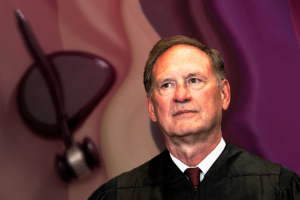
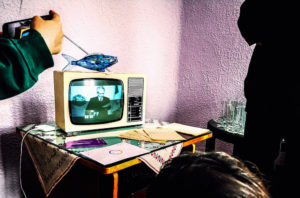
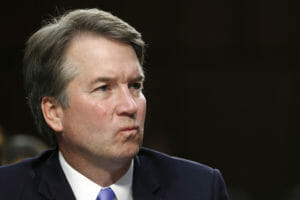
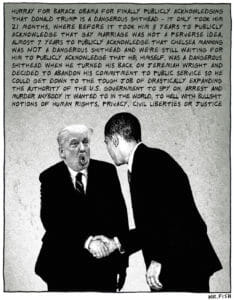
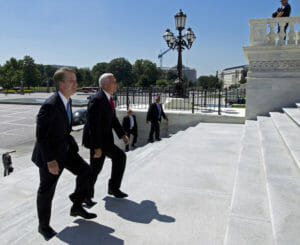
You need to be a supporter to comment.
There are currently no responses to this article.
Be the first to respond.